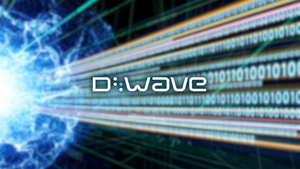Financial News
Cellectis Showcased Preclinical Data at an Oral Presentation and Two Poster Presentations at the 29th International Society for Cell & Gene Therapy (ISCT 2023) Annual Event
- Preclinical data on UCART20x22, Cellectis’ first allogeneic dual CAR T-cell product candidate to treat B-NHL, presented at an oral session
- Encouraging data presented on gene editing process using Cellectis TALEN® technology to develop highly efficient HBB gene correction of sickle cell mutation
- Comprehensive analysis to better design efficient TALE Base Editors (TALE-BE) using Cellectis’ TALEN® technology presented in a poster
NEW YORK, June 05, 2023 (GLOBE NEWSWIRE) -- Cellectis (the “Company”) (Euronext Growth: ALCLS - NASDAQ: CLLS), a clinical-stage biotechnology company using its pioneering gene-editing platform to develop life-saving cell and gene therapies, showcased preclinical data at an oral presentation and two poster presentations at the International Society for Cell & Gene Therapy (ISCT) 29th annual event that took place at the Paris Convention Center in Paris, France on May 31 - June 3, 2023.
“Our breadth of scientific presence at the 29th ISCT annual event reflects the type of cutting-edge research our teams undertake, which we believe is essential to address patients’ unmet medical need. We are proud of the pre-clinical results presented and remain deeply focused on the development of our product candidates to deliver breakthrough treatments that could benefit thousands of patients worldwide,” said André Choulika, Ph.D., Chief Executive Officer at Cellectis.
Oral Presentation
UCART20x22: allogeneic dual CAR T-cells for the treatment of B-cell malignancies
Autologous CAR T-cell therapies have shown outstanding responses in the treatment of selected blood cancers, predominantly B-cell malignancies. Nevertheless, long term studies revealed that some patients treated with CD19 or CD22 CAR T-cells can relapse due to low target antigen expression in tumor cells or to antigen loss. The therapeutic options after CAR T-cell relapses are limited, emphasizing the need to develop novel therapies to improve current survival rates. There is also need for allogeneic “off-the-shelf” therapies that could be readily available at the time of treatment decision and overcome limitations of current autologous approaches.
UCART20x22 is Cellectis’ first dual-targeting, allogeneic cell therapy product candidate targeting CD20 and CD22, to address the current challenges in the treatment of B-cell malignancies.
UCART20x22 features TALEN®-mediated disruptions of the TRAC gene (to minimize the risk of graft-versus-host disease) and of the CD52 gene (to permit use of a CD52-directed monoclonal antibody in patients’ lymphodepletion regimen) to enhance CAR T engraftment, expansion, and persistence.
Cellectis demonstrates that UCART20x22 displays robust activity in vitro and in vivo, against targets expressing heterogeneous levels of CD22 and CD20. We have used in vitro cytotoxicity assays against different tumor cell lines, showing strong activity whether these cells express a single antigen (CD20 or CD22) or both antigens simultaneously, as well as IFNg release in response to antigen specific stimulation.
The oral presentation highlighted the following preclinical data:
- Robust in vitro and in vivo cytolytic activity against tumors expressing different antigen combinations.
- Efficient in vitro targeting of primary B-cell Non-Hodgkin Lymphoma (B-NHL) samples harboring different CD20 and CD22 expression levels, suggesting that UCART20x22 has the potential to reach a large patient population.
- Dose dependent tumor control in vivo, using batches manufactured internally, harboring a tumor cell line as well as in a Patient Derived Xenograft (PDX) model of B-NHL.
Overall, Cellectis provided pre-clinical proof-of-concept data for a first allogeneic dual CAR T-cell to overcome current mechanisms of resistance to CAR T-cell therapies in B-NHL, while providing a potential therapeutic alternative to CD19 targeting and allowing to reduce the time from treatment decision to infusion.
UCART20x22 is currently evaluated in the NATHALI-01 Phase 1/2a clinical study in patients with relapsed/refractory B-NHL (NCT05607420).
The oral presentation is available on Cellectis’ website: https://www.cellectis.com/en/investors/scientific-presentations/
Poster Presentations:
Non-viral DNA delivery associated to TALEN® gene editing leads to highly efficient correction of sickle cell mutation in long-term repopulating hematopoietic stem cells
Sickle cell disease stems from a single point mutation in the HBB gene which results in sickle hemoglobin. For patients who are not eligible for an allogeneic stem cell transplantation, nuclease-based gene therapy approaches provide a relevant therapeutic alternative to restore functional hemoglobin production.
Cellectis leveraged TALEN® technology to develop a gene editing process leading to highly efficient HBB gene correction via homology directed repair, while mitigating potential risks associated to HBB gene knock-out. Furthermore, we compared viral (TALEN-V) and non-viral (TALEN-NV) DNA template delivery strategies in mobilized healthy donor (HD) or non-mobilized homozygous sickle patient (HbSS) hematopoietic stem and progenitor cells (HSPCs).
Both strategies led to high and comparable efficiencies of HBB gene correction in vitro in HD and HbSS, without affecting viability, purity or clonogenic potential of corrected HSPCs.
The poster presentation highlighted the following data:
- TALEN®-mediated engineering efficiently corrects the mutated HBB gene in clinically relevant HSPCs and promote phenotype correction in fully mature RBCs.
- Cellectis optimized TALEN® gene editing process mitigates potential safety challenges by reducing the frequency of HBB gene inactivation (<10% β-thal cells).
- Non-viral DNA template-mediated HBB repair mitigates p53 DNA damage response activation, preserves edited LT-HSCs fitness and enables their efficient engraftment in vivo using an immunodeficient murin model.
These results show that non-viral DNA delivery associated to TALEN® gene editing reduces the toxicity usually observed with viral DNA delivery and allows high levels of HBB gene correction in long-term repopulating hematopoietic stem cells.
The poster presentation is available on Cellectis’ website: https://www.cellectis.com/en/investors/scientific-presentations/
Comprehensive Analysis of the Editing Window of TALE Base Editors
One of the most recent advances in the genome editing field has been the addition of the so-called “C-to-T TALE base editors” (TALE-BE), an innovative platform for cell therapy that relies on the deamination of cytidines within double strand DNA, through the formation of an uracil (U) intermediate. These molecular tools are fusions of a transcription activator-like effector (TALE) domain for the binding of a specific DNA sequence, split-DddA deaminase halves that will catalyze the conversion of a cytosine (C) to a thymine (T) upon reconstitution, and an uracil glycosylase inhibitor (UGI).
Cellectis aimed to systematically investigate the influence of the sequence context surrounding the targeted Cytosine on TALE-BE C to T conversion efficiency.
Recently we developed a strategy that allowed us to comprehensively characterize editing efficiencies in function of the TC position within the TALE-BE editing windows. This method is specifically taking advantage of the highly precise and efficient TALEN mediated ssODN knock-in in primary T cells, allowing to focus on how target composition and spacer variations can affect TALE-BE activity/efficiency.
The poster presentation highlighted the following data:
- Determined optimal spacer length (13/15 bp) for highly efficient TALE-BE for both C40/C40 and C11/C11 scaffolds.
- Determined optimal common sequence context for high editing rates.
- Determined that editing efficiency of the C11/C11 scaffold is highly dependent on Cytosine position requirements, resulting in more stringent activity in a context of 15 bp spacer size and decreasing the effects of bystander editing.
Overall, we believe that the knowledge obtained will allow to better design efficient TALE-BE while improving the specificity profiles of this innovative editing platform.
The poster presentation is available on Cellectis’ website: https://www.cellectis.com/en/investors/scientific-presentations/
About Cellectis
Cellectis is a clinical-stage biotechnology company using its pioneering gene-editing platform to develop life-saving cell and gene therapies. Cellectis utilizes an allogeneic approach for CAR-T immunotherapies in oncology, pioneering the concept of off-the-shelf and ready-to-use gene-edited CAR T-cells to treat cancer patients, and a platform to make therapeutic gene editing in hemopoietic stem cells for various diseases. As a clinical-stage biopharmaceutical company with over 23 years of experience and expertise in gene editing, Cellectis is developing life-changing product candidates utilizing TALEN®, its gene editing technology, and PulseAgile, its pioneering electroporation system to harness the power of the immune system in order to treat diseases with unmet medical needs. Cellectis’ headquarters are in Paris, France, with locations in New York, New York and Raleigh, North Carolina. Cellectis is listed on the Nasdaq Global Market (ticker: CLLS) and on Euronext Growth (ticker: ALCLS).
Forward-looking Statements
This press release contains “forward-looking” statements within the meaning of applicable securities laws, including the Private Securities Litigation Reform Act of 1995. Forward-looking statements may be identified by words such as “anticipate,” “believe,” “intend”, “expect,” “plan,” “scheduled,” “could” and “will,” or the negative of these and similar expressions. These forward-looking statements, which are based on our management’s current expectations and assumptions and on information currently available to management. Forward-looking statements include statements about the advancement and the potential of our innovation and preclinical programs. These forward-looking statements are made in light of information currently available to us and are subject to numerous risks and uncertainties, including with respect to the numerous risks associated with biopharmaceutical product candidate development. With respect to our cash runway, our operating plans, including product development plans, may change as a result of various factors, including factors currently unknown to us. Furthermore, many other important factors, including those described in our Annual Report on Form 20-F and the financial report (including the management report) for the year ended December 31, 2022 and subsequent filings Cellectis makes with the Securities Exchange Commission from time to time, as well as other known and unknown risks and uncertainties may adversely affect such forward-looking statements and cause our actual results, performance or achievements to be materially different from those expressed or implied by the forward-looking statements. Except as required by law, we assume no obligation to update these forward-looking statements publicly, or to update the reasons why actual results could differ materially from those anticipated in the forward-looking statements, even if new information becomes available in the future.
For further information on Cellectis, please contact:
Media contact:
Pascalyne Wilson, Director, Communications, +33 (0)7 76 99 14 33, media@cellectis.com
Investor Relations contacts:
Arthur Stril, Chief Business Officer, +1 (347) 809 5980, investors@cellectis.com
Ashley R. Robinson, LifeSci Advisors, +1 617 430 7577
Attachment

More News
View More





Quotes delayed at least 20 minutes.
By accessing this page, you agree to the following
Privacy Policy and Terms Of Service.




